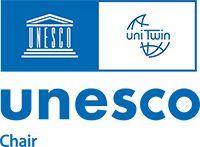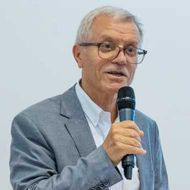- A
- A
- A
- ABC
- ABC
- ABC
- А
- А
- А
- А
- А
-
-
Education
-
Science
11 Myasnitskaya St., Moscow
+7 (495) 621-28-73
issek@hse.ru
Meissner D., Zhou Y., Fischer B. et al.
Technological Forecasting and Social Change. 2022. Vol. 178.
Abdrakhmanova G., Vasilkovsky S., Vishnevskiy K. et al.
M.: National Research University Higher School of Economics, 2022.
Saritas O., Burmaoglu S., Ozdemir D.
Futures. 2022. Vol. 137.
Sokolov A., Shashnov S. A., Kotsemir M. N.
In bk.: BRICS Comprehensive Innovation Competitiveness Report 2020. Scientific and technical documentation press, 2021. P. 36-98.

10 Facts about ISSEK

2022 marked 20 years since the HSE Institute for Statistical Studies and Economics of Knowledge has been founded. To celebrate this 20th Anniversary, we selected key events and facts in ISSEK’s history that sparked reflective discussions in academia, set new milestones for HSE University, or encouraged development in various sectors of the Russian economy and public life.
ISSEK research agenda covers all spheres of the knowledge-based economy — education, science and innovation, ICT
The dictionary published for ISSEK’s 10th Anniversary called ‘Knowledge Economy in Statistical Terms: Science, Technology, Innovation, Education, Information Society’ (HSE ISSEK, 2012, issued in Russian), said that ‘in education, we see how knowledge is being accumulated and transferred, and how human capital is forming and developing throughout the human life. We see how science and innovation create new knowledge, transforming it into tangible and intangible assets. Information and communication technologies accelerate knowledge circulation and establishment of the information society by permeating into all areas of human activity’.
ISSEK research agenda is constantly updated: for example, what began as a systemic study of the information society, now became a wide area of research devoted to the digital economy; other important areas include analysis of human development, creative economy, and knowledge-intensive business services (KIBS).
The ISSEK staff measures the current state of the abovementioned and adjacent sectors, as well as trends in their development based on quantitative methods (first of all statistical and big data analysis, sociological surveys, bibliometrics and patent activity analysis) and qualitative methods (like expert interviews and panels, models, scenarios, etc.).
ISSEK is HSE University’s largest research institute
In 2002, Institute staff included between 11 and 20 employees, and at the end of 2022 — over 200 people. The ISSEK portfolio of projects that have been implemented during 20 years has over 500 names and is constantly expanding.
ISSEK has 20 research centres, two international research labs — for science and technology studies and economics of innovation, UNESCO Chair on Future Studies, as well as the Department of Educational Programmes coordinating activities of the Master’s degree ‘Governance in Science, Technology and Innovation’. On top of that, ISSEK has an editorial board for Foresight and STI Governance, Editorial and Publishing, Design, and Science Communications units.
ISSEK employees introduced the term ‘innovations’ into the Russian discourse…
Leonid Gokhberg, First Vice Rector, Director of ISSEK, said:
‘The term ‘innovations‘ itself has been coined over 20 years ago by our group of researchers. The first publications on this subject were written by us‘.
Examples of works:
- Gokhberg L., Mindeli L. (1993) Science, Technology, Innovation Policy: Russian Federation. Collective monography. Organisation of Economic Co-operation and Development, Ministry of Science and Technology Policy of the Russian Federation. Moscow.
- Gokhberg L., Kuznetsova I. (1996) Statistics of Innovation: First Results and Nearest Prospects. Issues of Statistics. Issue 3.
- Gokhberg L. (1996) Statistics of Science and Innovation. Statistical Dictionary. Moscow. Finstatinform.
… and presented a foresight methodology to the Russian academic and expert community
Leading employees of one of the oldest ISSEK departments created in 2006 — the International Research and Educational Foresight Centre — have conducted foresight studies since the late 90s. Among hundreds of implemented foresight projects on federal, sectoral, regional, and corporate levels is the identification of critical technologies, creation of technological road maps, systems of long-term S&T development priorities and Russian Long-Term S&T Foresight 2030 (that has been translated into English and Chinese).
Each autumn, ISSEK conducts the International Academic Conference ‘Foresight and Science, Technology, and Innovation Policy’ which has been acknowledged by the OECD as one of the most reputable discussion platforms on this issue.
In 2021, the Foresight Centre established a UNESCO Chair on Future Studies within the Global Futures Literacy Network.
ISSEK-issued Foresight and STI Governance was first among HSE University scientific journals included into Scopus
Foresight and STI Governance has been published since 2007, since 2014 — in English. Many authors from different countries consider this journal a reputable platform for discussing the most pressing issues of S&T foresight, trend analysis, innovation strategy studies, and complex systems.
In 2013, Foresight and STI Governance was the first among HSE University academic journals that entered the Scopus international citation database, and 2022 was also the third consecutive year when Foresight and STI Governance became a Q1 journal in economics.
Springer–ISSEK series ‘Science, Technology and Innovation Studies’ now includes 15 volumes
In 2013, ISSEK initiated a series of monographs ‘Science, Technology and Innovation Studies’, which became the first joint publishing project between the Higher School of Economics and Springer Nature. The series has been issued from 2016 and is very popular among its readers (top 10% of most downloadable publications). Several volumes have been translated into other languages.
Some issues present a panoramic view on the development of the economy and society through the prism of STI policy measures; others are focused on several aspects of the knowledge economy and tell people about the results of studying researchers’ careers development, scientific diplomacy, and education reforms; some have a number of applied governance practices or analytical materials on current issues, for example, describing the COVID-19 aftermath. Most of the monographs are dedicated to methods and practices of S&T foresight.
ISSEK coordinates one of the biggest HSE University projects — Monitoring of Education Markets and Organisations
MEMO is conducted since 2002 with the participation of several HSE University research institutes and represents the only Russian system of yearly sociological and statistical research encompassing all levels of education. The results are used as data support of the educational policy, provide Russian education authorities with current information on the economic state of the education system, and create a database necessary for the analysis and forecast of the education development.
MEMO is being coordinated by ISSEK Centre for Statistics and Monitoring of Education.
ISSEK rates innovation growth points for all Russian regions
Since 2012, ISSEK issues Russian Regional Innovation Ranking (in Russian). The series has seven issues (issued in Russian), with the 8th in the works.
A distinctive trait of the Ranking is a hierarchical structure of qualitative and quantitative indicators grouped into five pillars. It helps to rank the regions not only by the value of the overall Russian Regional Innovation Index but also evaluate their ranks for all pillars: Socio-Economic Conditions, Science and Technology Potential, Innovation Activity, Export Activity, Quality of Regional Innovation Policy.
With the iFORA Big Data Mining System, ISSEK identifies the frontiers of the global science
ISSEK experts have mapped global science and identified its frontiers — most significant development areas — using AI technology for the first time.
Since 2017, almost every major project focused on evaluating promising areas of science and technology, industries and markets, skills and competencies involved the iFORA Big Data Mining System developed by ISSEK staff with the use of advanced AI technologies. Its database contains over 700 million sources (publications, patents, laws and standards, market analytics, media, materials of international organisations, vacancies, and other types of documents in Russian, English, and Chinese) and is daily updated by approximately 30 thousand documents.
In 2020, iFORA was mentioned in Nature as an effective decision-making tool for businesses and governments. OECD considers this system a successful initiative in science digitalisation.
ISSEK measured public engagement in S&T for over 20 years
Within the Monitoring Survey of Innovative Behaviour of the Population, ISSEK sociologists have been studying Russians’ attitudes towards the sphere of research and development — how open they are to innovations and ready to help scientists do their job.
ISSEK is constantly communicating its research results to academia and the expert community and engaging with the wider audience, which is confirmed by the publication activity indicators and media coverage.
It has become a good tradition to prepare scenarios and forecasts for the upcoming year in partnership with the leading media. These key facts about ISSEK end with a suggestion to browse key trends issued (in Russian) with the ‘RBС Trends’ portal that will determine our life in 2023.

- About
- About
- Key Figures & Facts
- Sustainability at HSE University
- Faculties & Departments
- International Partnerships
- Faculty & Staff
- HSE Buildings
- Public Enquiries
- Studies
- Admissions
- Programme Catalogue
- Undergraduate
- Graduate
- Exchange Programmes
- Summer Schools
- Semester in Moscow
- Business Internship
-
https://elearning.hse.ru/en/mooc/
Massive Open Online Courses
-
https://www.hse.ru/en/visual/
HSE Site for the Visually Impaired
-
http://5top100.com/
Russian Academic Excellence Project 5-100
- © HSE University 1993–2025 Contacts Copyright Privacy Policy Site Map
- Edit

